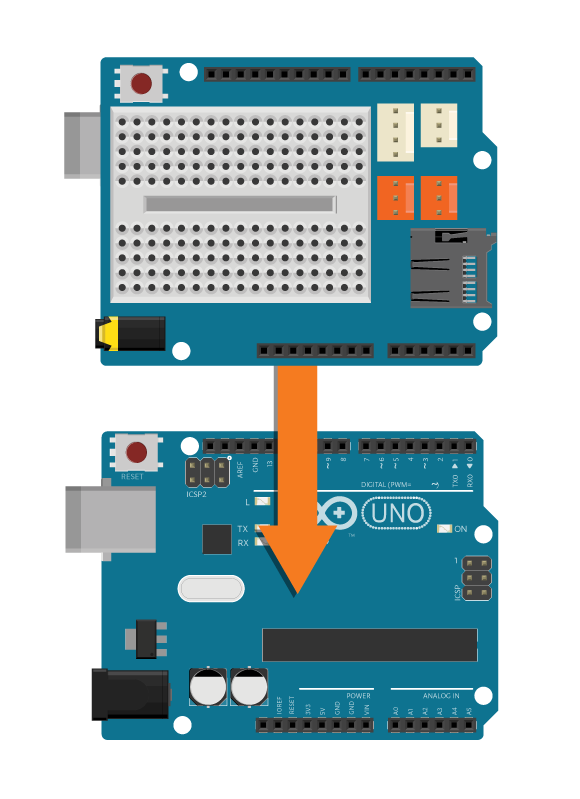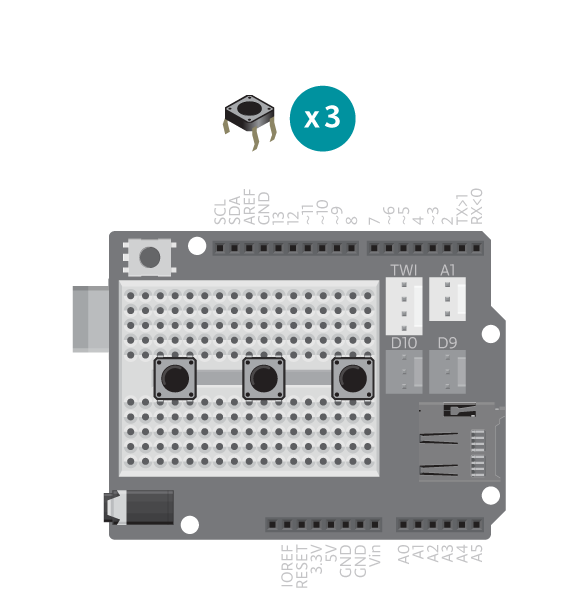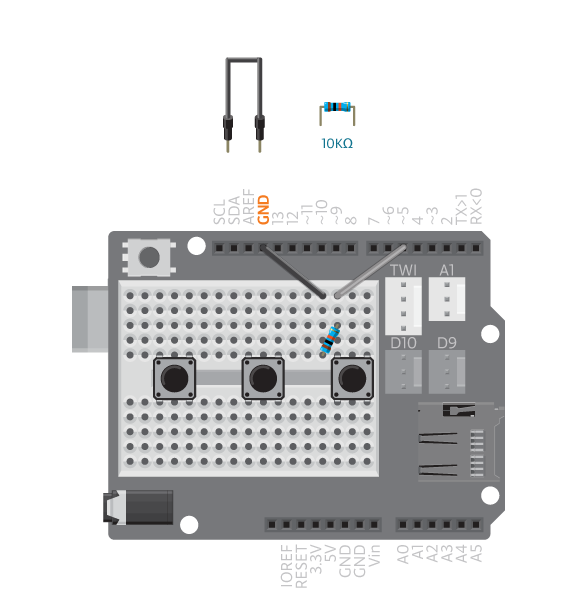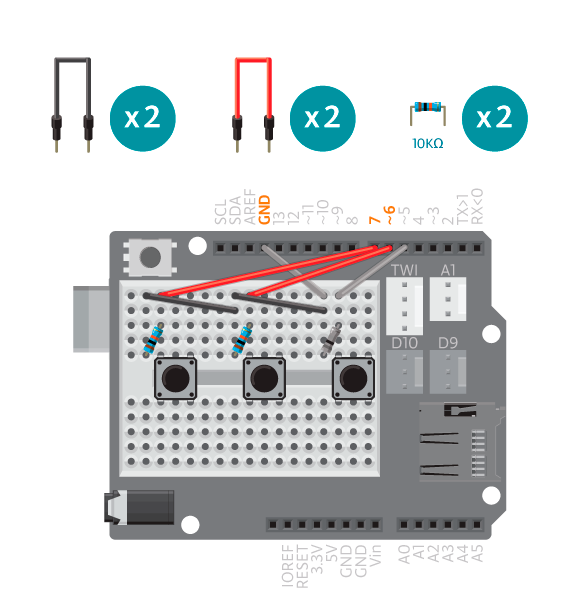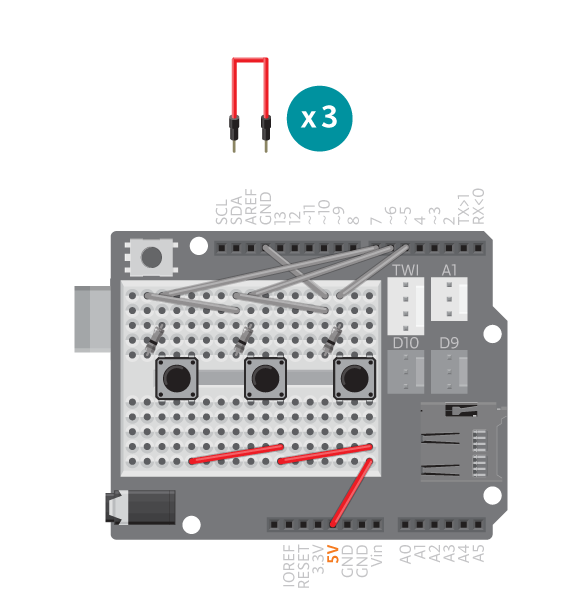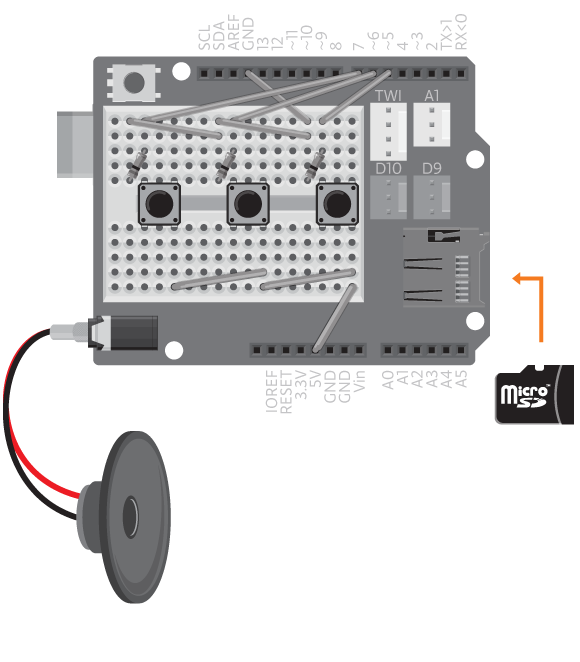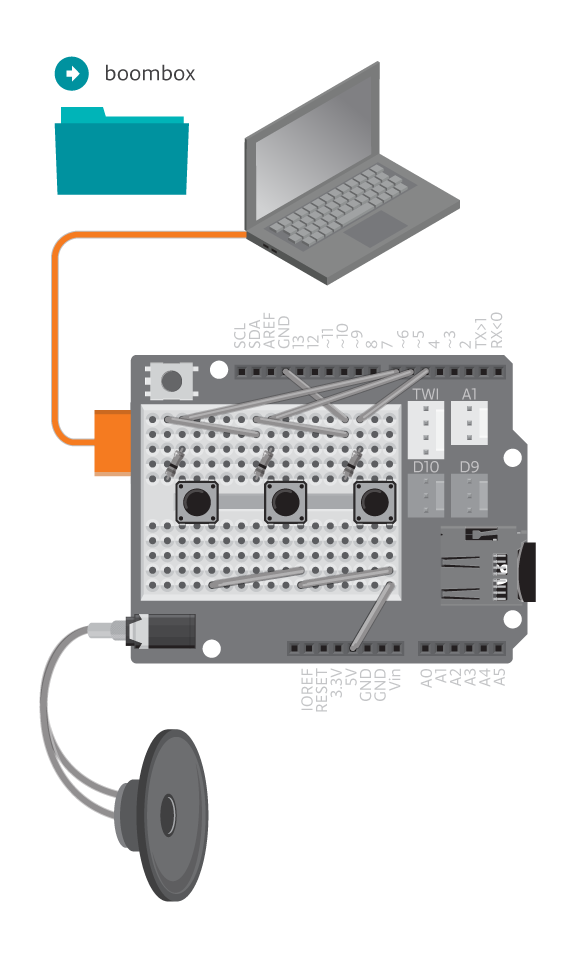This is your first step towards these kinds of skills. The boom box is a small sample player you can use to make music, or just random sound. It comes with three prerecorded samples but we probably don’t have the same creative cleverness when it comes to recording as you do so you should definitely record your own samples too!
Materials
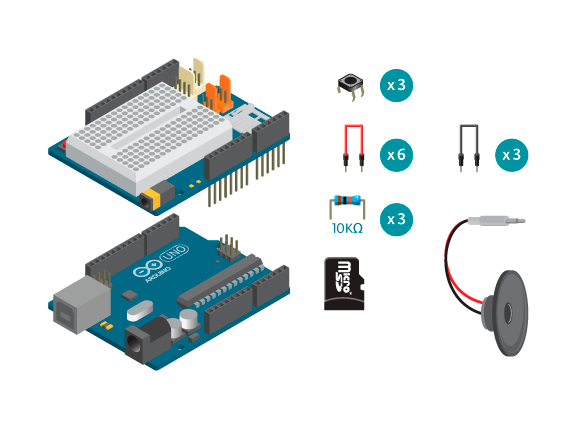
- 1 Arduino Uno board
- 1 Basic Education shield
- 1 micro SD card
- 3 buttons
- 3 10k ohm resistors
- 3 black jumper wires
- 6 coloured jumper wires
- 1 paper speaker
Instructions
Code
You can find the code in File -> Examples -> Castilla -> Magic -> BoomBox
How it works
Player enables Arduino to play .wav sound from an SD card.
The program first waits for either of the 3 buttons to be pressed, and plays the sound associated with it. Then it restarts.
Troubleshooting
- Debug the buttons, see the button reference.
- Debug the music player, see the Player reference for details.
Experiment further
- Add more buttons to play more sounds!
